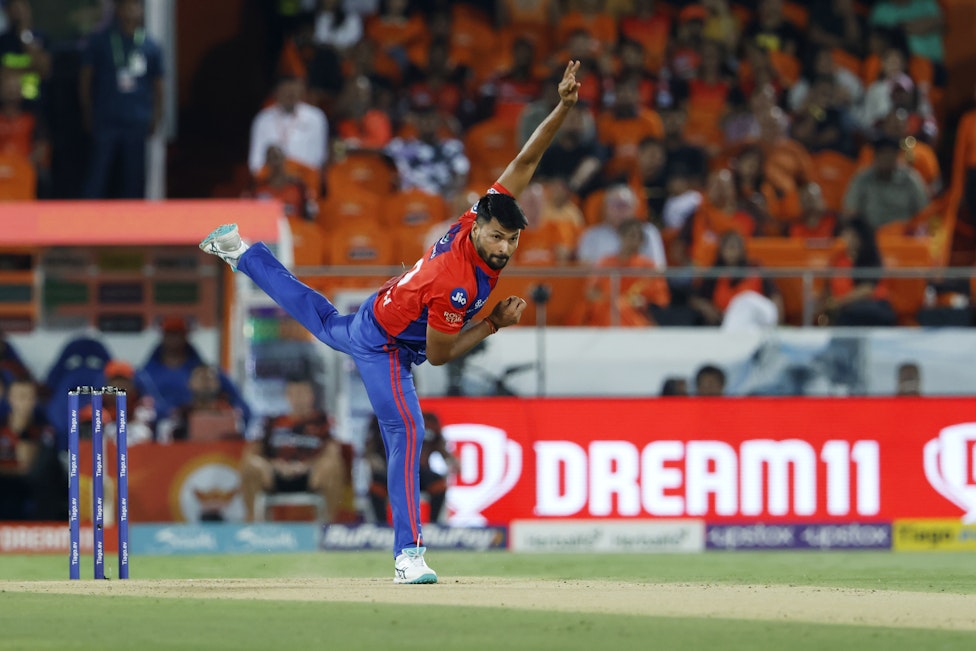 FEATURES
FEATURES15 years and 992 games later, it’s baffling to see teams still struggling to read pitches. The game between SRH and DC was yet another example of that.
What’s more surprising is the blatant chasing bias in this edition. Over 90% of the games played so far have seen the toss-winning side opt to bowl first. This, despite the fact that teams have successfully defended in over half of the games, including four of the last five and seven of the last 10 games.
There are various reasons why teams lose more games while chasing in IPL 2023.
A possible explanation could be that an Impact Player can be better utilized if a team is batting first. More often than not, the team batting first goes in with an extra batter who is later subbed out for a bowler.
"With the new rule, you just feel like you need more runs. You feel like it's maybe 10 or 15 runs you need to add because of the extra batter," Faf du Plessis, the Royal Challengers Bangalore skipper, said at the post-match presentation after successfully defending against the Delhi Capitals.
In tonight’s game, we saw Delhi Capitals subbing out Sarfaraz Khan for Mukesh Kumar after the first innings.
Because Mukesh operates across phases for the Capitals, the odds of him creating an impact were always going to be higher. And there he was, successfully defending 13 runs by dishing out five yorkers in the final over.
Can all wins by a team defending be credited to the impact players? Of course not. But, the fact that it allows the Impact Player to be in the game for an extended period helps the team’s cause.
On the other hand, teams batting second tend to bring in a late order batter, a player type that’s very rare to find. Given the high-risk high-reward approach, the pressure is always on the Impact Player to get his team over the line.
To set some context, the average score falls from 179 in the first innings to 164 in the second innings. And more than 90% of this dip can be attributed to the diminishing returns in the final four overs.
A slightly left-field reason could be the energy levels of an Impact Player. A bowler brought in as an Impact Player usually gets to spend some time on the field before getting a shot with the ball. This helps him get the adrenaline pumping, understand the conditions better, and bowl according to the match situation.
However, Tim David made a valid counter to this. After helping his side to get over the line against Delhi Capitals last week, David said: "At the moment, I've been the Impact Player: I get to sit down for 20 overs and watch and by the time I came out to bat I was fresh. Maybe that helped me get back for a quick two at the end of the game?"
Unfortunately, that wasn’t the case for Sunrisers Hyderabad. They brought in Rahul Tripathi as their Impact Player. While he might not be a late order batter, he is known for his ability to get going from the beginning. But, he could not get going tonight, eventually being dismissed for a painful 15 (21).
Barring an almost fatal scoop attempt off his second delivery, he did not play a single attacking shot. Not surprisingly, he ended his innings without scoring a single boundary.
Tonight, with more wear and tear, spinners were bound to get more purchase. In fact, in the game’s mid-innings interview, Washington Sundar spoke about how spinners got a lot more turn when they slowed it up.
DC spinners seemed to have taken note of that. Led by Sundar’s 3-for, SRH’s spinners had a haul of 3/69 in nine overs. Their Delhi counterparts ended up with figures of 3/43 in their eight overs. It wouldn’t be entirely wrong to say that SRH lost the game in this battle.
Historically, teams have preferred to chase because that would help batters pace their innings much better. In some sense, that is a very batter-centric way of looking at it.
We cannot discount the fact that, in the second innings, bowlers too are better equipped to bowl at batters. They have a better understanding of where to bowl, where to place fielders, what to bowl, etc.
Cricket is a sport where the bowler acts and the batter reacts. Since most batting is instinctive, bowlers have a lot more time to process the available information and make their decisions. That’s not exactly the case with batters.
Two examples from tonight’s game demonstrate just that.
Firstly, Heinrich Klaasen’s innings. DC knew very well that he was one of the few in-form batters in the opposition. And they ensured they didn’t serve anything to him on a platter.
Of the 19 balls he faced in his innings, there were 13 instances where Klaasen was forced to hit towards the longer part of the boundary, including his dismissal. Despite timing the ball very well, the longer boundaries meant that it found the fielder.
Next, Mukesh Kumar’s brilliant final over. Sure, he nailed those yorkers as well as anyone. The more impressive feat was his ability to bowl to his field. The final over was bowled from the end where the leg side was shorter for the right-handed batters. Only one ball in the entire over went in that direction.
As monsoons hit different parts of the country in May, dew will play a much bigger role. Coupled with the fact that pitches are only expected to slow down as the tournament progresses, it’s high time teams start recognizing their inherent chasing bias and be more proactive than, “We believe we can chase whatever is on the board.”